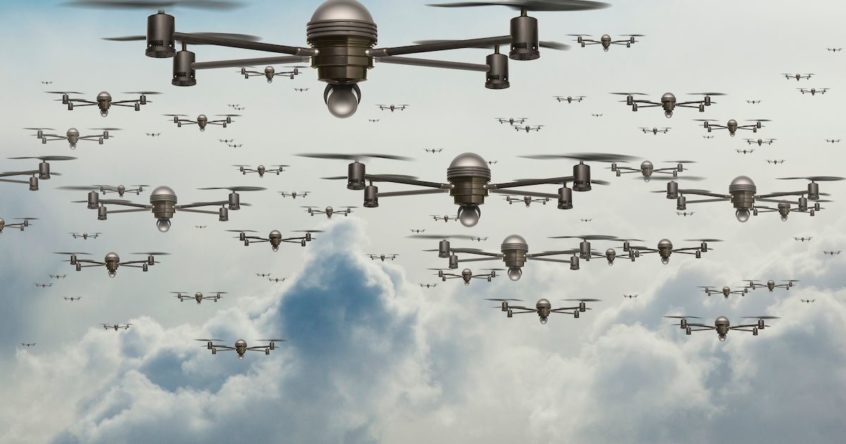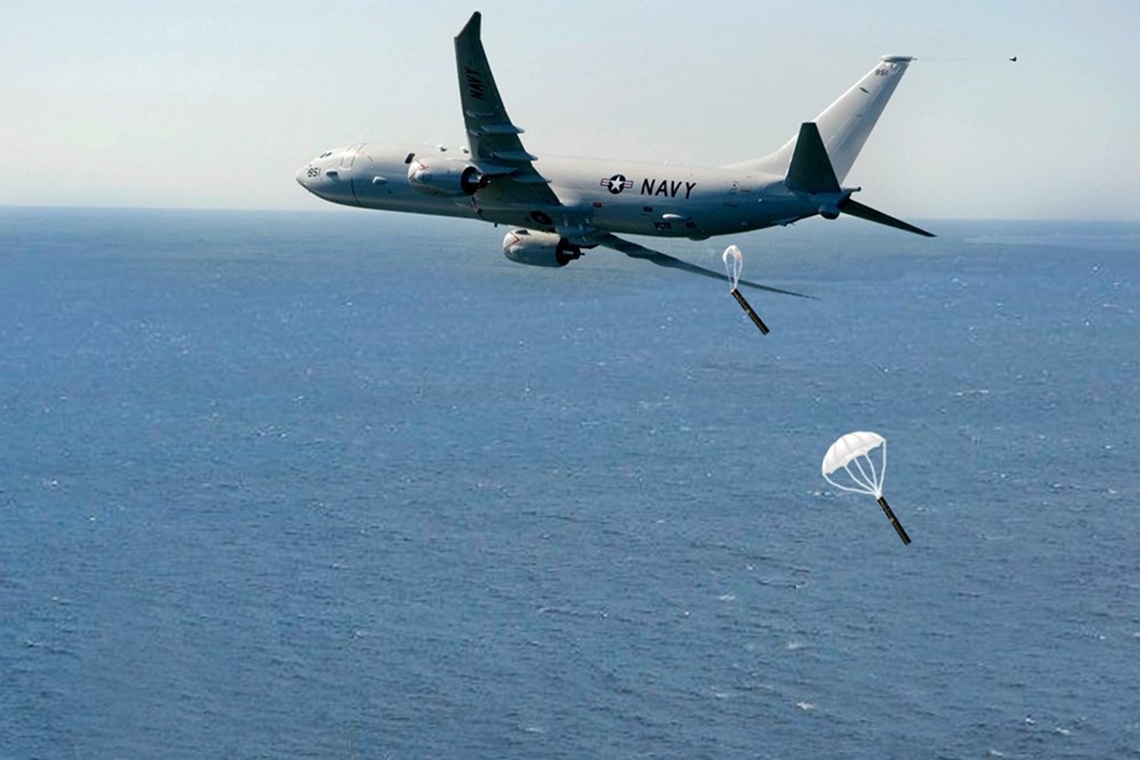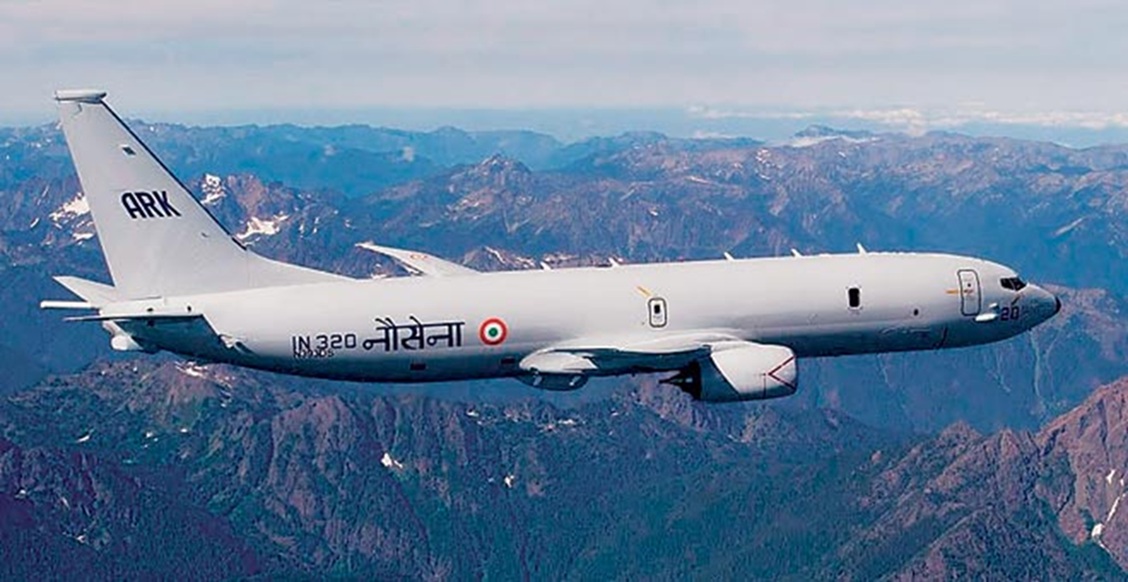Mitigating drone threats is still a major challenge for the leading armed forces in the world.
The Unmanned Aerial System consists of three components, a remote-controlled aircraft, a ground-based controller, and a communication link with the UAV. The drones are controlled remotely by a human operators with various degrees of autonomy. Fully autonomous UAVs have no provision for human intervention and enjoy the highest level of autonomy.
Drones can also be used as attack craft for suicidal missions. Before we move on to the topic at hand a brief classification as to the type of drones needs to be known. These are described in the succeeding paragraph.
Various Classifications
The Drones can be classified with respect to Weight, Endurance, and Levels of Autonomy. They are as under:-
Weight
Class 1 – Under 150 kgs
Class 2 – Between 150 to 600 kgs
Class 3 – Above 600 kgs
Endurance and Altitude of Operation
Tier 1 – Low Altitude Long Endurance (LALE)
Tier 2 – Medium Altitude Long Endurance
Tier 3 – High Altitude Long Endurance
Levels of Autonomy
There are six levels of Autonomy
Level 0 – Basic Assistance; Drone is controlled manually with assistance from the drone for safe flight
Level 1 – Low-level automation and advanced assistance; The drone is able to automate landing and/ or return to home base in an open area
Level 2 – Partial Automation; The drone can reliably execute planned grid flights with little to no pilot inputs
Level 3 – Conditional autonomy. Specific mission types are automated by the drone. The pilot remains as an emergency override
Level 4 – Partial Autonomy. The pilot provides mission intent and parameters, then remains aware as a fallback system during flight
Level 5 – Full autonomy with AI-based reinforcement learning. The pilot may start the mission remotely, optionally with an abort button
Threat from Drones
Drones today can be a toy for hobbyists, a tool for commerce and logistics and a multi-purpose, multi-dimensional platform for security and military applications. Drone ranges from miniature ones carrying small payloads to huge drones that can launch Hellfire missiles.
But drone technology has a dark side too. They can be used for Industrial espionage by interdicting into rival companies wifi and cable connections. The threat from suicidal drones across the border could be disastrous for frontline forces. In the hands of terrorists, they could become a very potent weapon. It can be used as suicidal drones to attack public gatherings, sports events, religious festivals, and any scenario one can think of. It can also be used to target individuals in a crowd. The assassination of the Iranian General Qasem Soleimani is a classical example.
There are three threat categories of these drones. The first threat is in the form of a drone attack; drones carrying explosives, dirty bombs can hit vital Installations including Nuclear sites, critical facilities, populated areas, or events with large gatherings. The second threat is that of eavesdropping, espionage and tracking using high powerful cameras and other devices which can eavesdrop into conversations and transmissions through wifi or even cable networks. The third threat is the one being employed by our western adversary, using drones to smuggle in contraband, weapons, drugs, and even counterfeit money.
Countering the Drone Threat
Challenges
The expanding drone technology and its increasing autonomy poses serious challenges in mitigating the threat posed by this system. The UAVs’ ability to travel through the air could overcome most of the ‘traditional’ physical barriers. UAVs poses a very wide range of threats of which each one would require a unique mitigation approach.
The regulatory challenges impose special licensing for those in possession of drones and for the pilots to fly these machines. Depending on their weights, sizes, and employability, there are designated no-fly zones for drones.
Mitigating the Threat
Drones could be a treat if they are in the hands of rogue elements. No amount of regulations will stop such elements from wrongdoing. Hence the regulations will have to be given teeth or we should go for the destruction of the drones or even capture these drones. The extirpation of the drone threat will require a deployment of a system across areas where such threats are perceived
Detection and identification
Detection and identification is the first step in the process of neutralising drone threats. The structure, acoustics, and size of drones make it very difficult to detect aerial vehicles. According to a North Atlantic Treaty Organization Industrial Advisory Group Study (NATO,2013): “no one sensor type alone is able to provide sufficient tracking and identification capability to offer a reliable and effective defence against the drone threat.” The ever-increasing capabilities of drone technologies ensure the usage of several types of detection systems, namely; the reflectance of ultraviolet, visible, and infrared photons; radar reflectance; acoustic emissions; electromagnetic emissions; and induced magnetic fields.
Radars
The radars are mainly used for the detection of aerial objects like Missiles and aircraft, but the classic radar technologies are not suitable for drone detection as they are designed to avoid small objects. However, some Radar technologies can be adapted for drone detection; for example, the Electronic Scanning Radar or the Active Electronically Scanned Array (AESA) radars can be adapted for drone detection. It is a type of phased array radar in which the transmitter and receiver are made of a number of small solid-state modules. The beams are emitted by each element and reflections received by the antenna are reconstructed. Essentially AESA can scan large areas simultaneously without any moving parts (or minimum movement) (Cohen, 1994) (Pike, 2011). AESA—and similar advances in radar detection of small cross-sectional items—has the advantage of being extremely versatile, both in terms of host platforms and detection capabilities. However, with the variation in UAV radar cross-section, even the recent advances in AESA-type detection capabilities will be challenged regularly in detecting UAVs.
Electro-optical Systems
The electro-optical systems are also a potent technology in detecting drones. They have the capability of detecting, tracking, and also identifying a drone through visual contact with the drone. The infrared capabilities of some of these systems can easily distinguish the heat signature between the birds and the drones. Passive visible imaging (e.g., UV, visible and near-infrared) and passive thermal imaging (short-wave, medium wavelength, and long-wavelength infrared) are other electro-optical technologies that can be used in drone detection. The advantages of passive visible imaging include the possibility to distinguish between a UAV, birds, or any other object in the sky fairly inexpensively due to commercial availability. The advantages of the passive thermal imaging devices are the reduction of background signal noise, enhanced nighttime detection, and less susceptibility to weather degradations. However, the disadvantages are the requirement of a clear line of sight, the high susceptibility to the background noise of the passive visible ranging devices, and the low thermal signature of the drones in the case of thermal imaging devices.
Radio Emission
Many of the Drones and sensors use a radio connection to receive commands from a UAV operator through radio communication or transmit data (video feed for example) back to the operator or base station. These emissions can be detected and tracked. The primary advantage of this technology is its independence from light and weather conditions, meaning that detection can be done even in dark conditions or in foggy (rainy) weather. This technology also has the capability to take over the drone by radio spoofing. The disadvantages include the fact that not all UAVs will be emitting radio signals and that some can be set on an autonomous, powerless glide path. Most of the Anti-drone systems in the Market use this technology to detect and interfere with the drones using radio transmissions for control.
Acoustic
Acoustic sensors detect specific noise signatures created by UAV motors and propellers. Despite the advantages of being a passive sensor that is relatively inexpensive, acoustic sensors would make ineffective standalone detection systems (Busset, et al, 2015). For example, these sensors have a limited range, rely on matching registered acoustic sensors to a database of known UAV signatures, suffer from high nuisance alarm rates (especially in urban environments), and are not capable of detecting gliding UAVs as those do not produce any significant noise.
Magnetic detection systems
These are systems based on the detection of large metal objects by their influence on electromagnetic fields. These systems are potentially useful only against large UAVs made of metals or having significantly large metal parts, as they are only capable of detecting substantially large metal parts. This system is largely ineffective as most UAVs including smaller drones are now increasingly using carbon fibre frames.
Visual
This is the most effective method of detection as it provides unparalleled classification performance and almost immediate response initiation. However, there is a limit to human endurance and monotony does set in lowering the capabilities substantially over a period of time. Second, the limited nature of visual capability of Humans including vision-enhancing devices.
Neutralization and Destruction
This is the second stage of the mitigation process against drones. This stage involves the neutralization of drones either by capturing or destroying the drones. This involves the response which needs to be given to the attacking or intruding drones; whether to divert, capture or destroy. The choice of the response will be based on the threat perception of the intruding drones and the response capability of the defender. The factors which need to be taken into account would be; first, the interception range should be greater than the stand-off range of the drone to mitigate the damage which can be caused if an explosive carrying drone is destroyed in the air. Second, the detection and the response mechanisms must complement each other.
Capturing
One of the options is to capture the drones without destroying them. This gives the advantage of being able to gather intelligence about the drone, its intention, and its source of origin. If it is a payload-carrying drone you also get hold of the contraband. The methods which can be used for capturing the drones are enumerated in the succeeding paragraphs.
Interfering And Dominating The Radiowave And Navigation Systems
The drones use the GPS and GNSS for navigation and are mostly piloted through the use of radio waves. These can be interfered with to crash the drone or capture the drone to guide it to the desired location by use of Radio spoofing. The jammers can be used to jam the frequencies and cause the drone to crash. However, the drones which have the autonomous capability may not be destroyed or crashed as they can trace their way back to the home station.
UAV to UAV Capture
Use an anti-drone UAV to capture the intruder with a net. Presently this system is being developed by Fortem a USA-based Company. The advantage is that apart from the failure of the mission the captured drone can be analyzed further to decipher more information about the originator. The challenge is the timely detection and deployment of the anti-drone. In the case of swarms, the single anti-drone will be overwhelmed.
Destruction
The other option is the complete destruction of the intruding drone; especially the armed ones like the Turkish Songar Drones. These need to have a standoff to be destroyed or there may be some or extensive collateral damage. Some of the techniques include; lasers, electromagnetic pulse, firearms, surface-to-air missiles, and armed drones.
Lasers
The lasers operate by releasing a high-powered beam of photons on the intruder drone. This is useful against a swarm of drones. These are however costly to manufacture but are cheap to operate. However, it is difficult to keep the laser beam focussed on the moving drone. It is also adversely affected by weather conditions and can cause damage to the surroundings and any humans in the vicinity.
Electro-Magnetic Pulse (EMP)
A powerful EMP beam can disable the electronic components of the intruder drone and cause it to crash. The flip side is that these beams may cause damage to all the electronic installations within their range. Also, an autonomous drone may still escape from it by coming back to its home station.
Firearms
One of the classic approaches as demonstrated on India’s Western Borders is to use conventional firearms against intruder Drones. Some anti-aircraft guns have also been adapted to be used against drones. The advantage of this technique is that security forces are already trained and equipped with conventional firearms. The main disadvantage is that this technique poses a danger to the surrounding areas and requires a large amount of ammunition to be expended.
Armed Drones
Armed drones with Assault rifles underslung can be used to destroy intruders. The technique needs to be combined with detection. Once detected, the armed drone is launched to chase the intruder and shoot to destroy it. However, the detection has to be at a stand-off distance so that it minimizes collateral damage in its own areas. This technology needs to be fine-tuned further with data for autonomous detection and neutralization.
Conclusion
Drones have definitely brought in a revolution in technology and logistics and are going to be a gamechanger in all major aspects of human consumption. Once gone into the hands of rogue elements, it could create havoc. Hence we need to have anti-drone systems that can mitigate these emerging threats.
The present anti-drone system needs a major upgrade to mitigate the threats. Most of the suicidal drones have low acoustic and heat signatures making them almost invisible to the present-day detection systems like radars etc. The Anti-Drone industry has to do much catching up to match the killer drones being developed today.
Disclaimer: The views and opinions expressed by the author do not necessarily reflect the views of the Government of India and Defence Research and Studies
Title image courtesy: Asia Times
References and Acknowledgements
- Binford Research Labs Pvt Ltd (www.binford.io)
- Analyzing the Threat of Unmanned Aerial Vehicles (UAV) to Nuclear Facilities by Alexander Solodov, Adam Williams, Sara Al Hanaei, Braden Goddard








